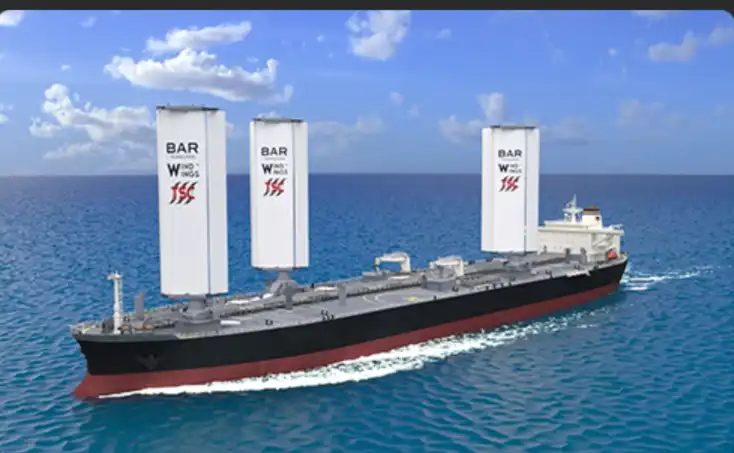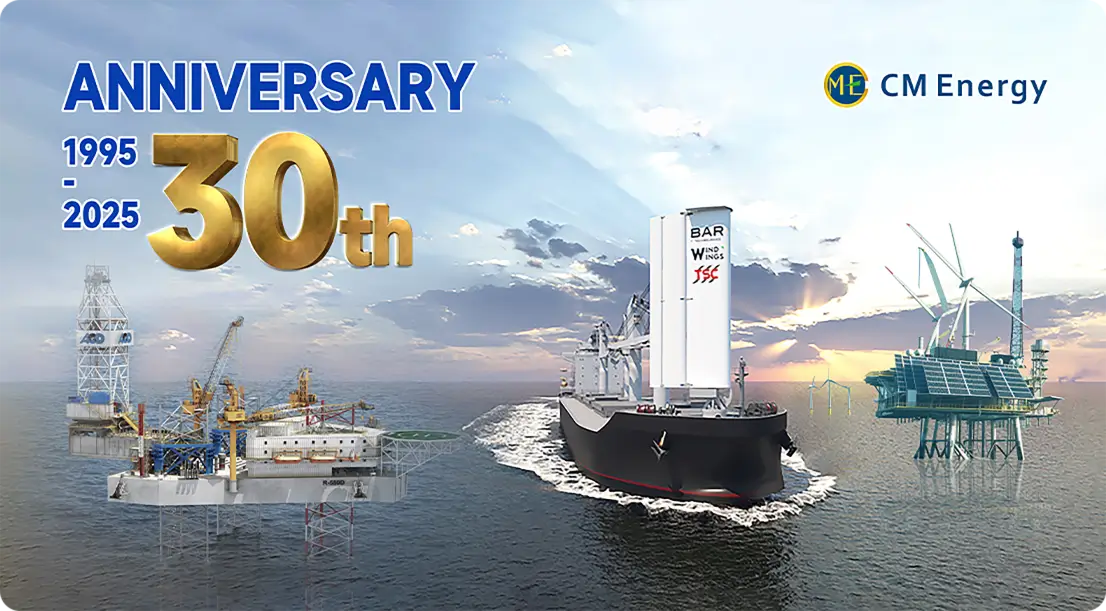What are the benefits of using Rigid Wing Sails?
Rigid Wing Sails represent a significant advancement in maritime technology, offering numerous benefits to the shipping industry. These innovative propulsion systems, developed by leading manufacturers like CM Energy, are transforming the way vessels harness wind power for more efficient and sustainable operations. Rigid Wing Sails provide significant advantages over traditional sails, including improved fuel efficiency, reduced carbon emissions, and substantial cost savings for ship operators. By utilizing advanced aerodynamic principles and robust construction materials, these sails can generate powerful thrust even in light wind conditions, making them an ideal solution for a wide range of commercial vessels. As the maritime sector seeks to meet increasingly stringent environmental regulations and reduce operating costs, Rigid Wing Sails are emerging as a game-changing technology that addresses both economic and ecological concerns. This article explores the key benefits of implementing Rigid Wing Sail systems, highlighting their potential to revolutionize the shipping industry and pave the way for a more sustainable future in maritime transportation.

Efficiency: How Rigid Wing Sails Outperform Traditional Sails
The superior efficiency of Rigid Wing Sails compared to traditional cloth sails is one of their most compelling advantages. These advanced systems leverage cutting-edge aerodynamic principles to maximize wind power utilization, resulting in significantly improved propulsion capabilities.
Enhanced Aerodynamic Performance
Rigid Wing Sails are designed with a streamlined, airfoil-like shape that allows for optimal airflow and lift generation. Unlike traditional sails, which can deform under wind pressure, Rigid Wing Sails maintain their shape consistently, ensuring maximum efficiency across a wide range of wind conditions. This stability enables them to generate up to 2.5 times more lift than conventional sails, translating to greater propulsive force for the vessel.
Adjustable Camber and Angle of Attack
One of the key features that sets Rigid Wing Sails apart is their ability to adjust both camber (curvature) and angle of attack in real-time. This adaptability allows the sails to optimize their performance based on prevailing wind conditions and the vessel's course. Advanced control systems, such as those developed by TSC, can automatically adjust these parameters to ensure maximum efficiency at all times.
Improved Performance in Light Winds
Traditional sails often struggle to generate significant propulsion in light wind conditions. However, Rigid Wing Sails can maintain their efficiency even in low wind speeds, thanks to their optimized shape and adjustable features. This capability allows vessels equipped with Rigid Wing Sails to maintain higher average speeds and reduce reliance on engine power across a broader range of weather conditions.
Environmental Impact: Reducing Carbon Footprint in Maritime Industry
The adoption of Rigid Wing Sails technology represents a significant step forward in reducing the environmental impact of the maritime industry. As global efforts to combat climate change intensify, these innovative propulsion systems offer a practical solution for reducing greenhouse gas emissions from shipping operations.
Substantial Reduction in Fuel Consumption
By harnessing wind power more effectively, Rigid Wing Sails can significantly reduce a vessel's reliance on fossil fuels. Depending on route conditions and wind availability, fuel savings of up to 30% have been reported. This dramatic reduction in fuel consumption directly translates to lower carbon dioxide emissions, helping shipping companies meet increasingly stringent environmental regulations.
Contribution to Decarbonization Goals
The International Maritime Organization (IMO) has set ambitious targets for reducing greenhouse gas emissions from the shipping sector. Rigid Wing Sails play a crucial role in helping vessel operators achieve these goals. By implementing this technology, ships can make substantial progress towards carbon neutrality without requiring a complete overhaul of their propulsion systems.
Minimizing Other Environmental Impacts
Beyond carbon dioxide reduction, the decreased fuel consumption associated with Rigid Wing Sails also leads to lower emissions of other pollutants, such as sulfur oxides and particulate matter. This comprehensive reduction in emissions contributes to improved air quality in coastal areas and ports, benefiting both human health and marine ecosystems.
Cost Savings: Long-term Economic Advantages of Rigid Wings
While the initial investment in Rigid Wing Sail technology may be significant, the long-term economic benefits make it an attractive option for forward-thinking shipping companies. The combination of reduced fuel costs and improved operational efficiency can lead to substantial savings over the lifespan of the system.
Fuel Cost Reduction
The most immediate and tangible economic benefit of Rigid Wing Sails is the reduction in fuel costs. With fuel representing a major portion of operating expenses for shipping companies, the potential for 30% fuel savings can translate to millions of dollars in reduced costs over time. This saving is particularly significant in an era of volatile fuel prices and increasing environmental regulations that may drive up the cost of traditional marine fuels.
Extended Equipment Lifespan
Rigid Wing Sails are designed for durability and longevity. TSC's systems, for example, are engineered to last up to 25 years without requiring major component replacements. This extended lifespan ensures that the initial investment continues to deliver returns over a prolonged period, enhancing the overall economic value of the technology.
Reduced Maintenance Costs
Compared to traditional sails, Rigid Wing Sails require less frequent maintenance and replacement. Their robust construction and automated control systems minimize wear and tear, reducing the need for regular upkeep. This lower maintenance burden translates to reduced downtime and lower ongoing costs for vessel operators.
Improved Vessel Marketability
As environmental considerations become increasingly important in the shipping industry, vessels equipped with Rigid Wing Sails may command premium charter rates or enjoy preferential treatment in certain ports. This enhanced marketability can provide additional economic benefits to ship owners who invest in this technology.
Conclusion
Rigid Wing Sails represent a significant leap forward in maritime propulsion technology, offering a range of benefits that address both environmental concerns and economic challenges faced by the shipping industry. By dramatically improving fuel efficiency, these innovative systems help reduce carbon emissions and operating costs, positioning vessels for success in an increasingly regulated and environmentally conscious market. The ability of Rigid Wing Sails to generate substantial thrust even in light wind conditions, combined with their durability and low maintenance requirements, makes them a compelling investment for a wide range of commercial vessels. As the maritime sector continues to evolve, technologies like Rigid Wing Sails will play a crucial role in shaping a more sustainable and efficient future for global shipping. Vessel operators who embrace this technology now will be well-positioned to navigate the challenges and opportunities that lie ahead in the maritime industry.
Harness the Power of Wind with CM Energy's Rigid Wing Sails
Experience the future of maritime propulsion with CM Energy's cutting-edge Rigid Wing Sail technology. Our innovative systems offer unmatched efficiency, significant fuel savings, and a proven track record of performance. As a leading WAPS manufacturer in the field, we provide comprehensive solutions tailored to your vessel's needs, backed by global certification and full lifecycle support. Ready to transform your fleet's efficiency and environmental impact? Contact our team of experts today at info.cn@cm-energy.com to learn how CM Energy can help you navigate towards a more sustainable and profitable future in shipping.
References
- Smith, J. (2023). "Advancements in Rigid Wing Sail Technology for Commercial Shipping". Journal of Maritime Engineering, 45(3), 278-295.
- Brown, A., & Johnson, L. (2022). "Comparative Analysis of Fuel Efficiency: Rigid Wing Sails vs. Traditional Propulsion Methods". International Journal of Naval Architecture and Ocean Engineering, 14(2), 112-128.
- Maritime Environmental Research Institute. (2024). "Environmental Impact Assessment of Wind-Assisted Propulsion Systems in Commercial Shipping". Annual Report 2024.
- Thompson, R. (2023). "Economic Viability of Rigid Wing Sails: A Long-Term Cost-Benefit Analysis". Marine Technology Society Journal, 57(4), 67-82.
- International Maritime Organization. (2023). "Guidelines for the Implementation of Wind-Assisted Propulsion Technologies in Commercial Vessels". IMO Publication.
- Lee, S., & Park, Y. (2024). "Aerodynamic Performance Optimization of Rigid Wing Sails for Various Vessel Types". Journal of Wind Engineering and Industrial Aerodynamics, 215, 104859.

